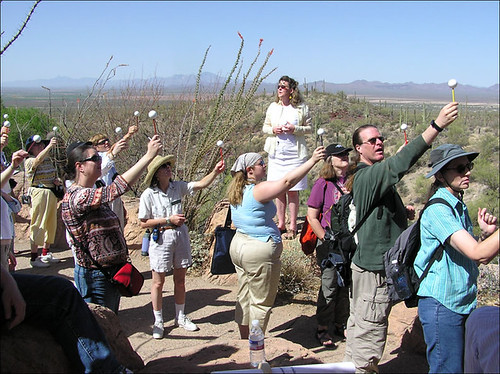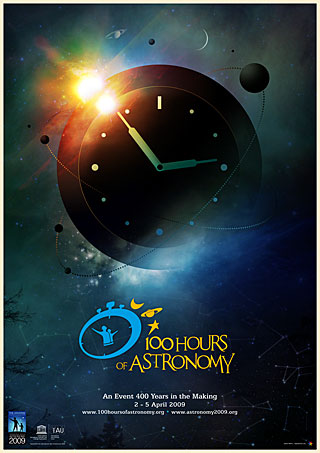If you've ever tried to replicate the phases of the moon, you probably did it the way I used to, by going into a darkened room, turning on a lamp in the middle of the room and then standing around it with a styrofoam ball in your hand. I'm here to tell you there's a better way.
Go outside! Yes, it's that simple. Take your ball on a stick and use the real sun! You see, the phases of the moon are really varying views of the shadow side and the sunny side of the moon as seen from Earth. It's so much easier to do than to explain that I'm just going to tell you how to do the activity and trust that it will all become clear to you. If not, just shoot me an email and I'll be sure to answer any questions you may have.
Here's what to do:
1. If you happen to have a small white styrofoam ball on hand, great! Prop it up on a stick, skewer, pencil or whatever you can find. If you don't, look for something similar. Ping pong balls are white, but a little on the small side. Little Dudestronomer has a small glow-in-the-dark basketball that I use for this purpose, and I just hold it with my hand because he insists I not pop it.
2. Go outside on a sunny day. This activity is most effective if you do it while the moon is out and visible, so check your times and dates and aim for a date/time when you can see the moon during the day.
3. As you hold your ball up in front of you, you can face toward or away from the sun, but the best starting place is off to the side of the sun a bit. As you look at your ball, you'll see that part of it is illuminated by the sun, and part is in shadow. You did it - you demonstrated one phase of the moon!
4. To get the whole cycle, imagine that you're Earth and your ball is the moon. Since the moon orbits Earth, make your ball orbit you - that is to say, spin in a circle with your arm outstretched. As you do, you'll see the phase of your little moon change. In order to get it to look right, you may need to tilt your orbit a bit.
5. If you have the real moon out in the sky, see if you can get your moon to look like the real moon. If it's a first quarter moon, make your moon first quarter. How long does the real moon take to get from first quarter to full? 1 week. From full to third quarter? Another week. From third quarter to new moon? Yet another week. And from new moon back to first quarter? You guessed it, one week.
Here is an actual photograph from the first time I tried this activity with a group of educators through Astronomy From the Ground Up (though I'm not in the frame):
 And to see if you're doing it right, your moon and the real moon should look like this (the real moon is to the right of the foam moon):
And to see if you're doing it right, your moon and the real moon should look like this (the real moon is to the right of the foam moon):



















